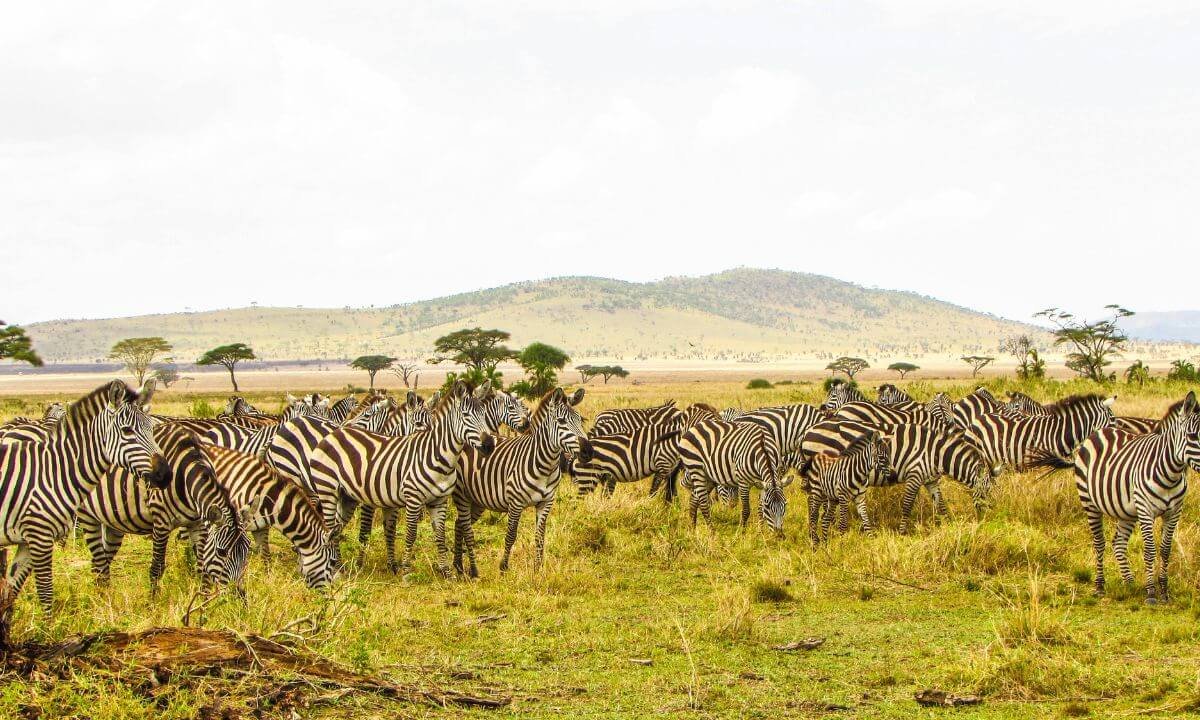Capturing the Great Migration in Serengeti National Park
The Serengeti National Park in Tanzania offers one of the most breathtaking wildlife spectacles on Earth—the Great Migration. Each year, millions of wildebeest, zebras, and gazelles traverse the vast plains in search of fresh grazing land, making it a dream destination for wildlife photographers. If you’re planning a photography trip, here are expert tips to help you capture the Great Migration at its best.
Capturing the Great Migration in Serengeti National Park: A Photographer’s Guide
1. Choose the Right Time of Year
Timing is everything when capturing the Great Migration in Serengeti National Park. The migration follows a cyclical pattern, so understanding its movements will help you plan the perfect trip:
- January to March: Calving season in the Ndutu region, with thousands of baby wildebeest being born.
- April to June: Herds move northward, crossing the central Serengeti.
- July to September: The dramatic Mara River crossings take place.
- October to December: Herds return to southern Serengeti and Ndutu.
Each phase offers unique photography opportunities, from predator action to chaotic river crossings.
2. Best Locations for Capturing the Great Migration
Ndutu Plains (January – March)
This area, located between Serengeti and the Ngorongoro Conservation Area, is where thousands of wildebeest give birth. The vast, open plains provide stunning backdrops for dramatic shots of newborns, predators, and incredible landscapes. The golden sunrise and sunset light add a magical touch to your images.
Grumeti River (May – June)
As the herds move north, they must cross the crocodile-infested Grumeti River. This location offers heart-stopping action shots as wildebeest brave the waters, dodging hungry predators. The riverbanks also attract predators like lions and leopards, creating an intense photographic scene.
Mara River (July – September)
The most famous and dramatic part of the migration happens here. The Mara River crossings are chaotic, filled with dust, splashing water, and high-energy movement. Crocodiles lie in wait, while some wildebeest struggle against strong currents. A good telephoto lens is essential for capturing these breathtaking moments.
Northern Serengeti (July – October)
As the herds disperse into Kenya’s Maasai Mara, the Northern Serengeti offers incredible wildlife diversity. This region provides excellent opportunities for wide-angle landscape shots featuring large herds against rolling savannahs and acacia-dotted plains.
Seronera Valley (Year-round wildlife viewing)
Even outside the migration season, Seronera is an excellent location for photography. The valley is home to a high concentration of predators, making it ideal for capturing interactions between lions, cheetahs, and leopards.
3. Essential Photography Gear for the Great Migration
To successfully capture the Great Migration in Serengeti National Park, pack the right gear:
- Telephoto lens (400mm or longer): Essential for close-up shots of wildlife action.
- Wide-angle lens: Great for landscape shots and capturing large herds.
- Tripod and monopod: Helps stabilize long shots, especially in low light.
- High-speed memory cards: You’ll be shooting a lot of action, so fast write speeds are crucial.
- Backup batteries and storage: The remote nature of the Serengeti means you’ll need extra power and storage space.
4. Photography Tips for Stunning Migration Shots
- Use burst mode: Capturing movement, such as wildebeest jumping into rivers, requires rapid-fire shots.
- Shoot during golden hours: Early morning and late afternoon light add depth and warmth to your images.
- Focus on storytelling: Capture not just the herds but also their interactions, struggles, and the surrounding landscape.
- Keep an eye on predators: Lions, cheetahs, and hyenas follow the migration, creating dramatic storytelling opportunities.
- Experiment with angles: Low angles make the animals look more imposing, while aerial shots (if using a drone where permitted) provide breathtaking perspectives.
5. Best Safari Lodges for Photographers
To maximize your photography experience, consider staying at strategically located lodges and camps:
- Serengeti Safari Camp: Moves with the migration for optimal viewing.
- Lamai Serengeti: Offers stunning views of the Northern Serengeti and Mara River crossings.
- Sayari Camp: A luxurious option with excellent access to migration hotspots.
- Ndutu Safari Lodge: Best for capturing the calving season.
Final Thoughts
Capturing the Great Migration in Serengeti National Park is a once-in-a-lifetime experience for any wildlife photographer. By planning your trip according to migration patterns, choosing the best locations, and using the right gear and techniques, you’ll come away with breathtaking images that tell the story of this incredible natural event.
Pack your camera, prepare for adventure, and get ready to capture the raw beauty of Africa’s most famous wildlife migration!
- best safari locations, Capturing the Great Migration, Content Creation, Great Migration photography tips, Location for photoshoot, photo shoot location, Photography, photography location, Scene Locate, SceneLoc8, Serengeti National Park, Serengeti photography, Tanzania safari, vloggers, wildlife photography

